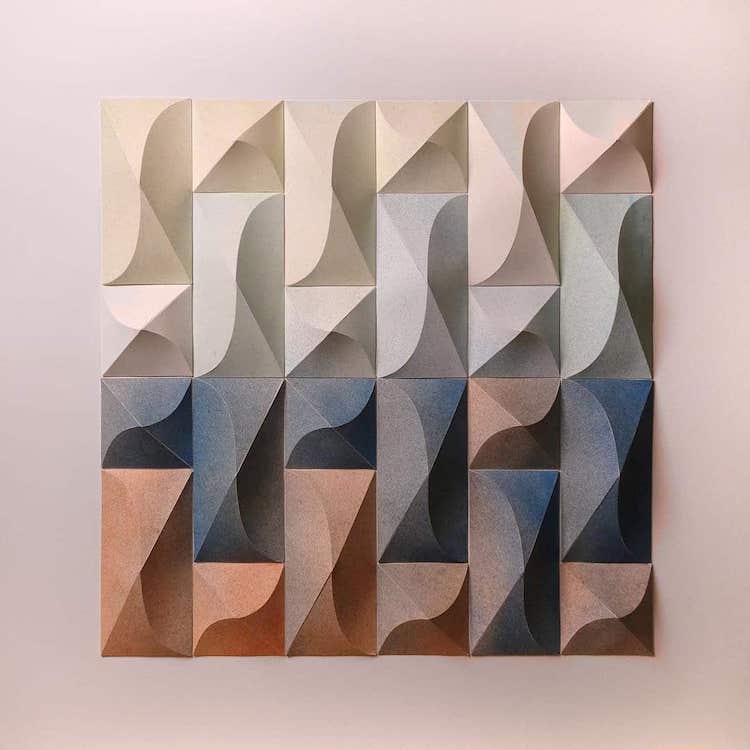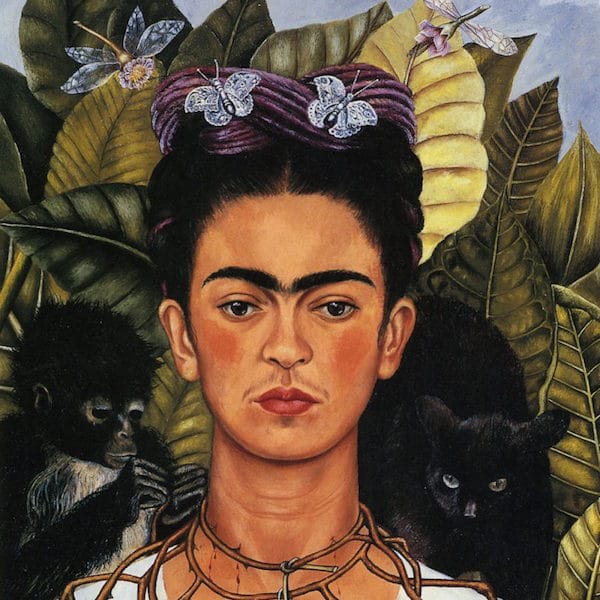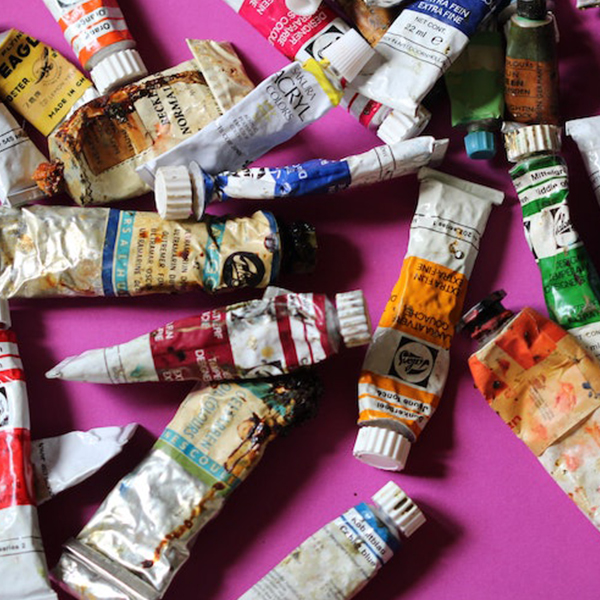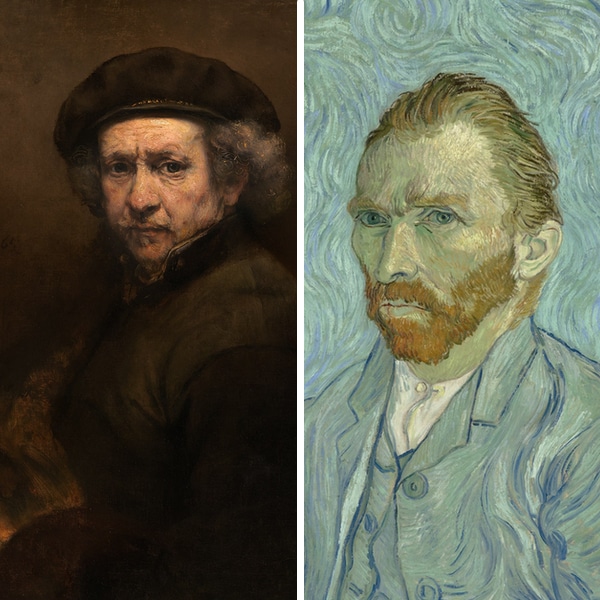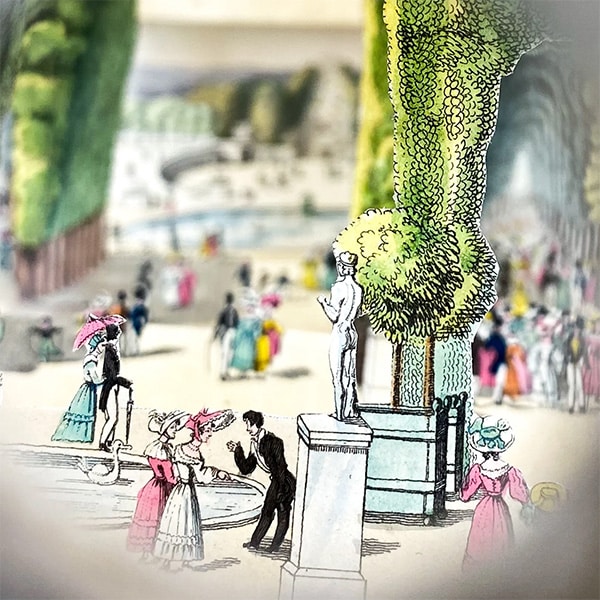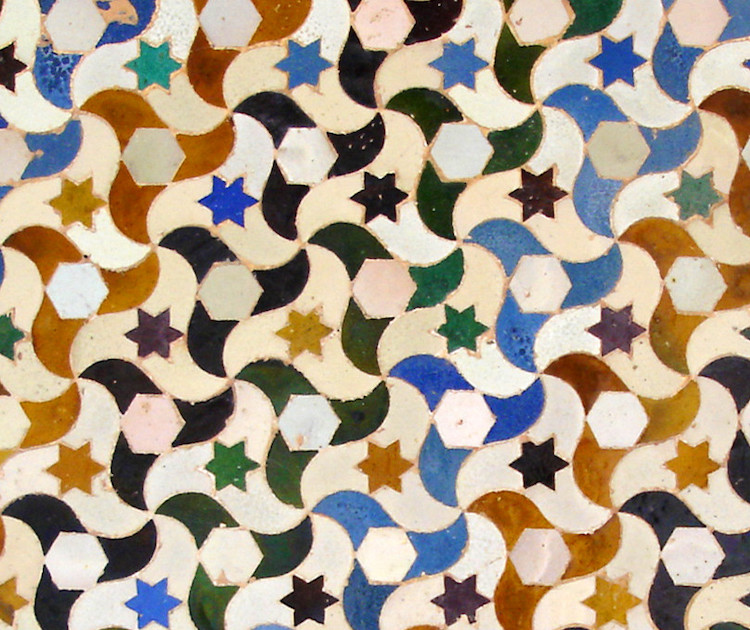
A wall tiling at the Alhambra, in Granada, Spain. (Photo: Wikimedia Commons, (CC BY-SA 3.0))
From patterned wallpaper to decorative mosaics, tessellations can be found all around us. The mathematical art of creating repeating patterns dates back to 4000 BCE when the Sumerians used clay tiles to decorate their homes and temples. Since then, virtually every other civilization throughout history adopted using tessellations in both art and architecture.
Read on to discover the history of tessellations and how the complex theory is still used today.
What is a tessellation?
A tessellation is when a geometric shape (or tile) repeats itself over and over again, covering a 2D or 3D surface without any gaps or overlaps. There are different styles of tessellations depending on the shapes used.
The word “tessellation” comes from the Latin term tessera meaning a small, tile-like stone. Tessera was used to make tessellata, meaning mosaics and tilings that decorate ancient Roman buildings.
Types of Tessellations
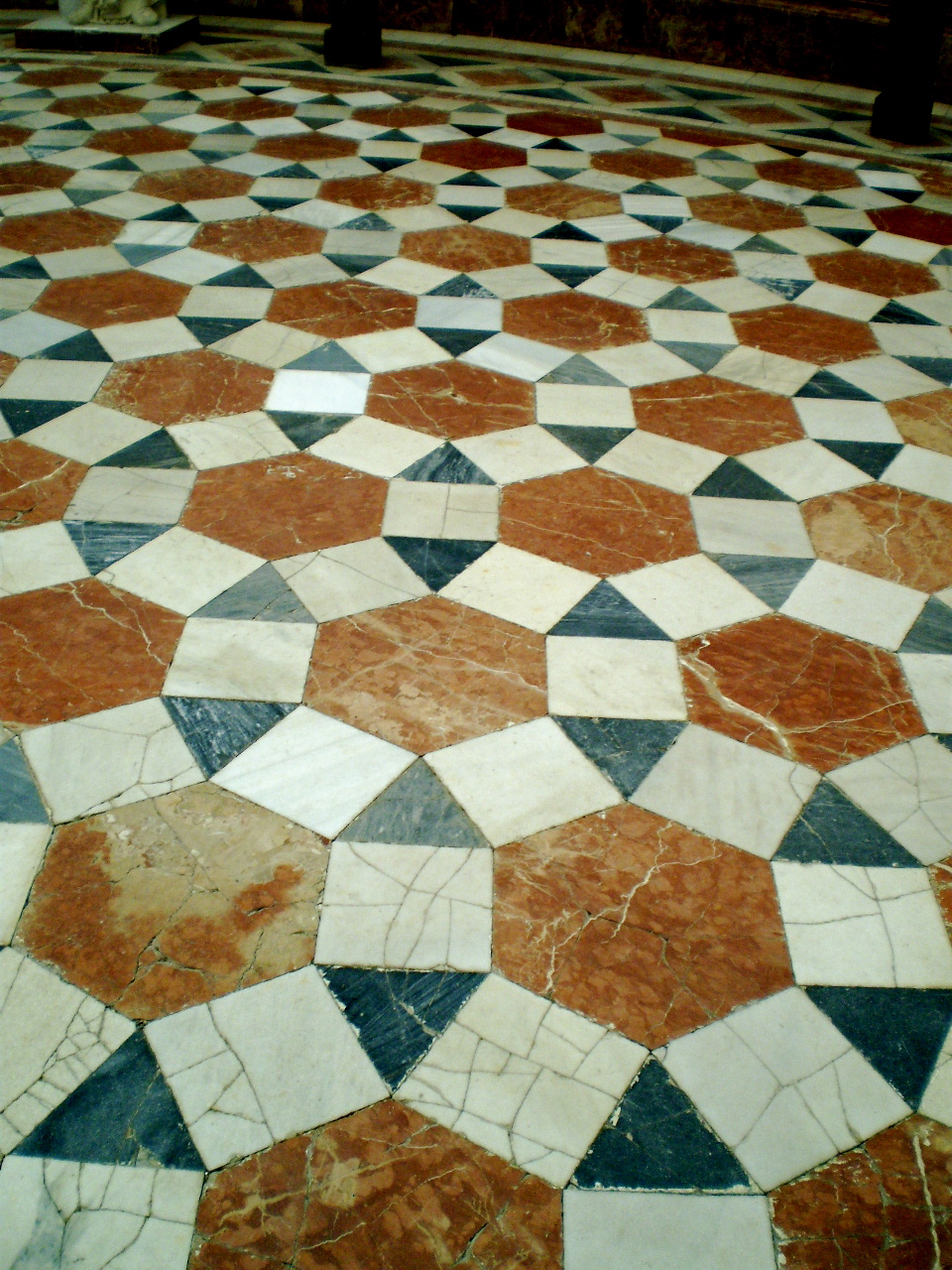
An example of semi-regular tessellation (Photo: Wikimedia Commons, (CC BY-SA 3.0))
There are many types of tessellations, all of which can be classified as those that repeat, are non-periodic, quasi-periodic, and those that are fractals. The most common configurations are regular tessellations and semi-regular tessellations.
Regular periodic tiling involves creating a repeating pattern from polygonal shapes, each one meeting vertex to vertex (the point of intersection of three or more bordering tiles). A checkerboard is the simplest example of this: It comprises square tiles in two contrasting colors (usually black and white) that could repeat forever.
Semi-regular tessellations occur when two or more types of regular polygons are arranged in a way that every vertex point is identical. Each vertex is surrounded by the same polygons arranged in the same recurring order. (See the example above.)
Now that we’ve covered the basic math of tessellations, read on to learn about how they were used throughout history.
Tessellations in Ancient Islamic Art and Architecture
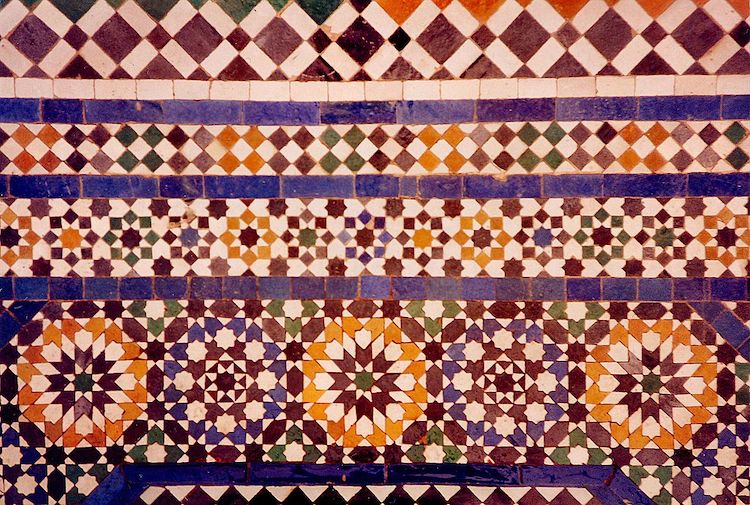
Ceramic tile tessellations in Marrakech, Morocco (Photo: Wikimedia Commons, (CC BY-SA 3.0))
While the Sumerians of 5th and 6th BCE used tiles to decorate their homes and temples, other civilizations around the world adapted tessellations to fit their culture and traditions; the Egyptians, Persians, Romans, Greeks, Arabs, Japanese, Chinese, and the Moors all embraced repeating patterns in their decorative arts.
Perhaps the most celebrated style of tessellations can be found in Islamic art and architecture. Religious Islamic art is typically characterized by the absence of figures and other living beings. This is because many Muslims believe that the creation of living forms is solely God’s doing. Therefore, they embraced the abstract characteristics of tessellation and used colorful geometric tiles to create non-representational patterns.
One of the most famous examples of Islamic tessellation art is in the Alhambra, a huge palace located in Granada, Spain. It was constructed by the Muslim Moors in the 14th century and became the royal residence and court of Mohammed ibn Yusuf Ben Nasr. Inside the fortress, walls are adorned with countless colored tiles in geometric formations.
In Islam, using tessellations to decorate surfaces and is called zillij. This style of mosaic tilework is made from individually hand-chiseled pieces set into a plaster base. You can still find zillij installations in Morocco and other predominantly Islamic countries, on the walls and floors of mosques, homes, public squares, and tombs.
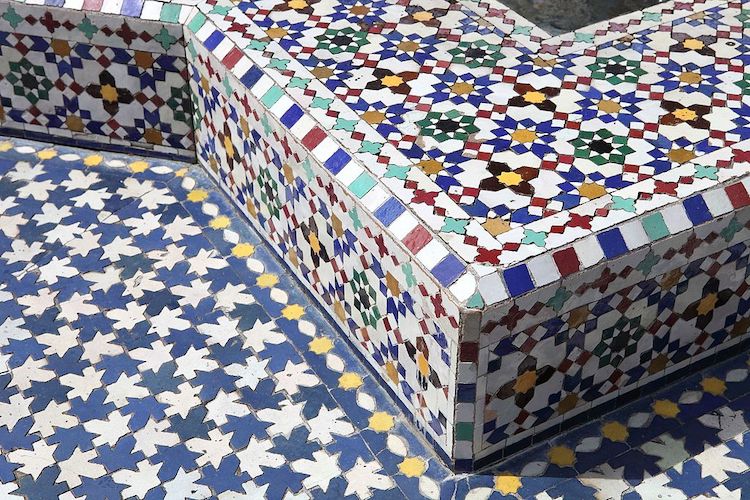
Tile work in Morocco Pavilion in World Showcase at EPCOT Center. (Photo: Wikimedia Commons, (CC BY 2.0))
Tessellation in Art History
When we compare the methodical theories of math and science to the free-thinking process of making art, it’s easy to forget that the three disciplines are often intertwined. Many artists have focused on creating art that follows certain mathematical rules.
M. C. Escher: The Father of Modern Tessellations
View this post on Instagram
The mathematical theory of tessellations also had an influence on the art world. Perhaps the most famous artist to use geometric grids in his work is M. C. Escher. Also referred to as the “father of modern tessellations,” the Dutch artist created irregular, interlocking tiles, shaped like animals and other natural objects.
Despite not having formal mathematical training, Escher had an eye for precision and a natural understanding of geometry. With his woodcut prints, lithographs, mezzotints, and drawings, he simply wanted to achieve balance, harmony, and perfection. He was once quoted saying, “Order is repetition of units. Chaos is multiplicity without rhythm.”
While Escher’s work is often associated with the Op Art movement, other artists used mathematical tessellations in a more practical, decorative way.
View this post on Instagram
View this post on Instagram
The Patterns of Koloman Moser
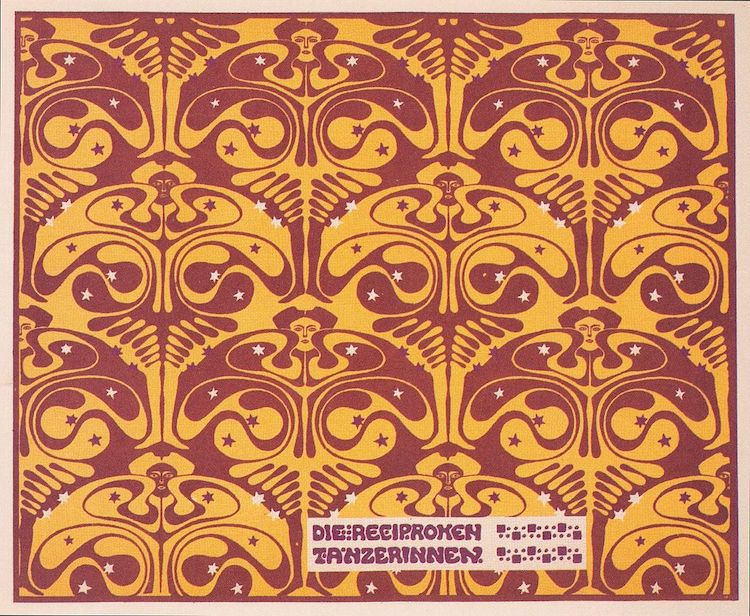
“Die Reciproken Tänzerinnen” (The Reciprocal Dancers) lithograph by Koloman Moser, 1901 (Photo: Wikimedia Commons, public domain)
Austrian artist Koloman Moser is known for his Art Nouveau-style patterns that follow the principles of tessellation. His influential, elaborate designs—often featuring nature motifs and geometric shapes—were used as textiles for fashion and interiors, wallpaper, posters, furniture, jewelry, and even postage stamps.
Along with Gustav Klimt, Moser was one of the founders of The Vienna Secession. The forward-thinking movement was a counter to the conservative artistic institutions in the Austrian capital at the end of the 19th century. The artists promoted a contemporary approach to art, and each developed their own styles that are still widely celebrated today.
Here are some examples of how contemporary artists are using tessellations in their art.
Paper sculptures by Matthew Chilean
Surreal Tessellation Landscape Drawings by Tim Stokes
View this post on Instagram
Hand-Printed Patterns by JeongSu
View this post on Instagram
Paper Tessellations by Ekaterina Lukasheva
Related Articles:
Artist Uses Engineering to Fold Mesmerizing Geometric Paper Sculptures
10 Incredible Mosques of the World Celebrating the Grandeur of Islamic Architecture
Photographer Travels Asia Capturing the Beautiful Patterns Emerging in Everyday Life
